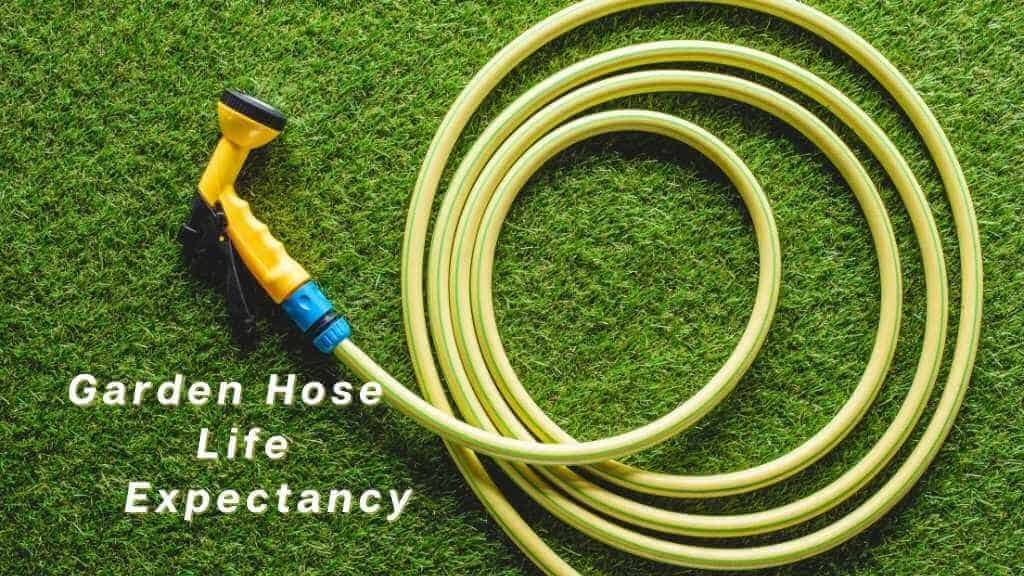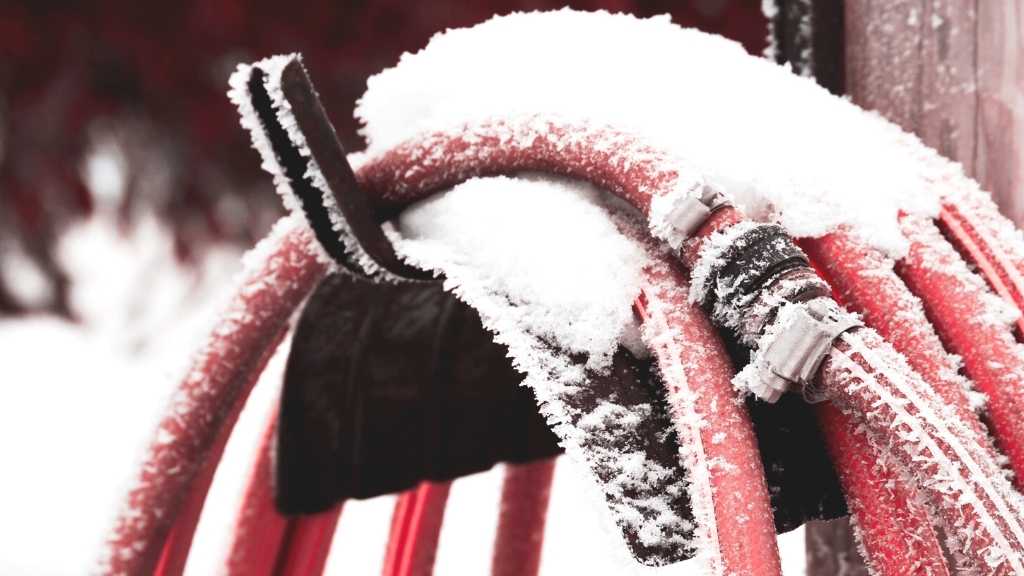When used above surface level, an average flexible water hose can last up to 3 years with no maintenance, up to 5 years with minor maintenance actions, and up to 15 years or more if properly maintained. Factors that determine an increased garden hose life expectancy are properly handling the hose while using it, hose material type, hose material quality, and proper storage year-round.
Most homeowners care a lot about keeping their gardens green and healthy. And when it comes to growing your plants and vegetables in a healthy and sustainable way, regular watering is one of the most important aspects.
Water hoses become indispensable to all garden owners out there. And, depending on the brand, material type, length, and other factors, garden hoses can be quite expensive.
In order to be sure we purchase the right type of hose, one of the first questions we asked ourselves was how long should we expect a garden hose to last.
In this post, we will detail the most common maintenance actions you can easily do to expand your hose lifespan. Additionally, we will provide some more examples related to how long hoses last.
Make sure to keep reading all the post sections below!
How Long Do Expandable Garden Hoses Last?
Expandable garden hoses are becoming more popular as time goes by.
Among the best pros for buying an expandable garden hose we can mention that it is lightweight, easy to handle, automatically expands when you turn on the water supply, automatically retracts, and self-drains when you turn off the water supply, doesn’t get tangled or kinked.
The most frequent cons related to buying an expandable garden hose are related to either the poor material the hose is made of or related to not taking enough care while using it. The most common damages that we encounter are cuts, pinholes, and leakage problems.
To make sure you pick a good quality expandable water hose that will last longer, do in-depth research and check that all the hose specs you need are met. Additionally, it is always helpful to check what type of warranty is offered.
Warranty always indicates the expected lifespan of the respective water hose. There are several serious manufacturers that offer 5 years to lifetime warranties for their expandable garden hoses. Seeing a warranty commitment on the hose label validates the quality of the expandable hose.
Warranty serves as a confirmation that you are buying a professional product, made to last. When a warranty is offered, the manufacturer stands by the quality and designated functionality of the expandable hose.
Even if defects may appear during the time, it is within your decision to request a replacement of your expandable hose.
How Long Will A Garden Hose Last Underground?
When deciding to bury a water hose there are several details to consider, such as:
- the material type of the hose
- how thick the garden hose is
- the digging depth
- the type of soil
- the presence of any natural garden pests that caused damage to your plants in the past. These can also damage the hose once buried.
The life expectancy of a buried hose also depends on these factors so we can’t confirm for how many seasons a buried hose will last. However, you will increase the chances of your buried water hose lasting longer if you take into account the below factors.
1. Bury a rubber water hose
Bury a rubber water hose – a rubber hose will last longer underground.
The average warranty for a standard rubber hose is of 5 years but can increase up to 7 years, and even to a lifetime warranty, depending on the quality and specifics of the rubber hose, and no matter if you use it above or below the surface level.
Choose a thicker rubber hose that can endure very high and very low temperatures. Most of the time these criteria will be mentioned on the label, by the manufacturer.
Rubber hoses support a higher soil pressure from above and keep their form intact, avoiding any interruptions in the water flow. They are long-lasting and naturally avoided by the most common garden pests.
However, if you have other material-type water hoses that meet the above criteria, these will have a similar lifespan as the rubber ones.
2. Burying depth
The deeper the depth at which the hose is buried, the longer its lifespan. The digging depth protects the hose from freezing temperatures and from garden pests, as they naturally prefer searching for food near the soil surface level.
3. Pay attention to any natural pests
If you had many problems in the past with different garden pests, you might want to seek specialist advice. Specialists will be able to provide the proper answers for the specific natural pest in question. Only then decide if it is safe to bury the water hose.
How to Extend the Life Expectancy of Your Hose – Garden Hose Maintenance
What does garden hose maintenance mean? Well, the basic maintenance of a water hose is related to how you use it, how you store it after use, how you store it depending on the season, and how clean you keep it.
Make sure you read the indications of the supplier’s How to Use Instructions. In most cases, they will mention any important aspects that you need to pay attention to when using the respective water hose.
From our research, it is important to handle the water hose carefully while carrying it around the garden. Constantly make sure it does not get stuck in rocky ground or plant beds, fences, tree roots, or other similar obstacles.
If possible, pick up the hose in your hands and carry it where needed, instead of dragging it across concrete or brick sidewalks. This can cause damage to both the hose and its fittings.
It is very helpful to use hose guides to create safe paths for the water hose across the garden. This ensures protection for both the plants and the hose. It is also simplifying the rolling of the hose while you guide it throughout the segment of the garden that needs watering.
The hose should not be dragged around by the nozzle sprayer. Remember grabbing the hose directly when moving it around. Grabbing it by the nozzle sprayer will weaken the connection between the nozzle and the hose. This will then conduct to future hose leakages.
Avoid dropping off the hose end directly onto hard surfaces, moreover, if you have a sprayer nozzle installed. These fittings can break when hitting concrete surfaces for example.
Keep the garden hose away from any chemical substances. These can cause different reactions in contact with the hose material and can produce serious irreversible damage to the hose.
Do not keep the hose under pressure when it is not used. After each use, turn off the water supply from the hose spigot and not from the nozzle sprayer.
Turning off only the nozzle sprayer will keep the hose water pressure on, making it impossible for you to roll the hose. Keeping the hose constantly under pressure can cause damage in time.
Patiently coiling and uncoiling a hose will extend its lifespan. After use, turn off the water supply, roll the hose into large loops and store it vertically on a hose holder. Alternatively, you can roll the hose onto a reel. This helps avoid issues, such as tangled hoses, or damages, such as hose kinking, cracking, cutting, and hose pinholes.
Overall storage plays an important part in the garden hose’s durability, during all seasons.
In the warm season, it is important to store the hose vertically, on a hose holder, fence, or hose reel, and in a space that is out of the sun’s reach.
Sun exposure can alter the components of the hose material and damage the hose functionality, elasticity, and integrity if kept in direct sun for long periods of time.
During the cold season, it is indicated that you store the hose in a similar manner, using a hose holder of your choice, but the difference is that during winter, the hose must be disconnected from the water supply, completely drained of any remaining water, and stored either outdoor, away from direct sun, or in a garage or shed, in a dry cool place.
You can read more about garden hose winter storage in our dedicated post – Click Here
Another tip for increasing the durability of your water hose is keeping it clean. From time to time, depending on how often you use the hose, the water specifics, and weather conditions, the garden hose will need to be properly cleaned.
You can read all about ways to clean your garden hose – Click Here
Conclusion
Garden Hose Life Expectancy depends on a series of variables. The most important part is played by the brand and it is related to how they produce the garden hose. The hose quality and sturdiness fall under the manufacturer’s responsibilities.
On the other side, we also have our share of responsibility when it comes to how much attention we pay to properly use and maintaining our garden hoses.
In this post, we covered both of these sides and provided the main details to consider when purchasing a garden hose and when using it. Both from the perspective of increasing the lifespan of our garden hoses and buying new ones more rarely.



